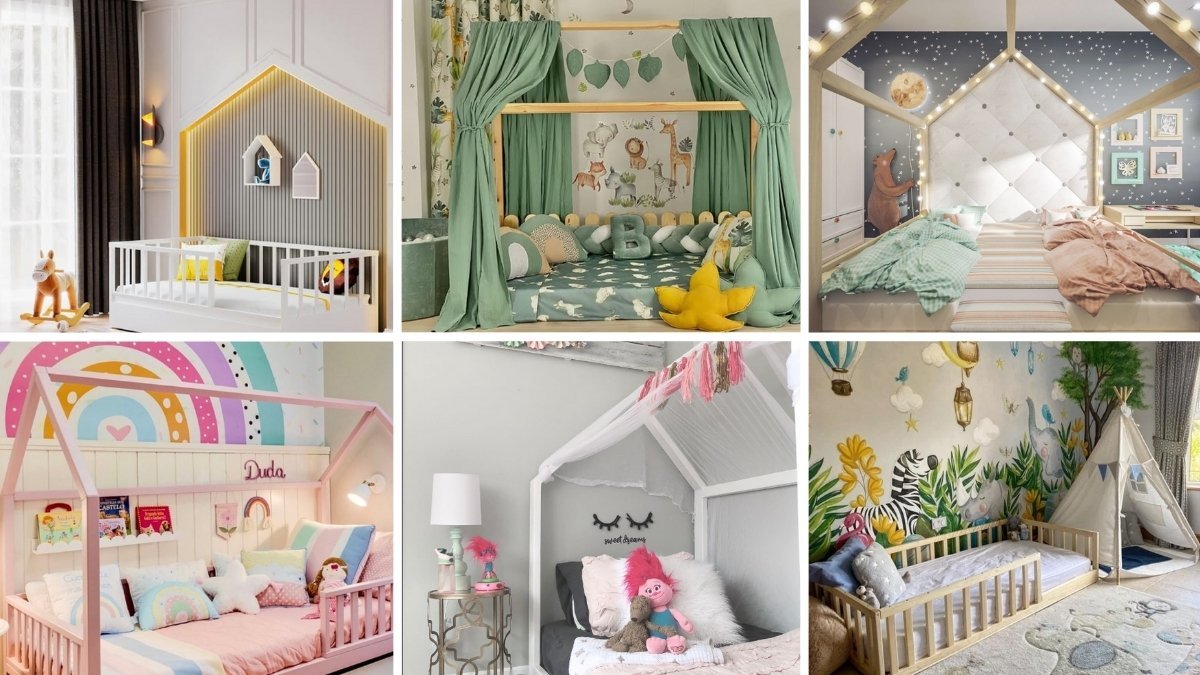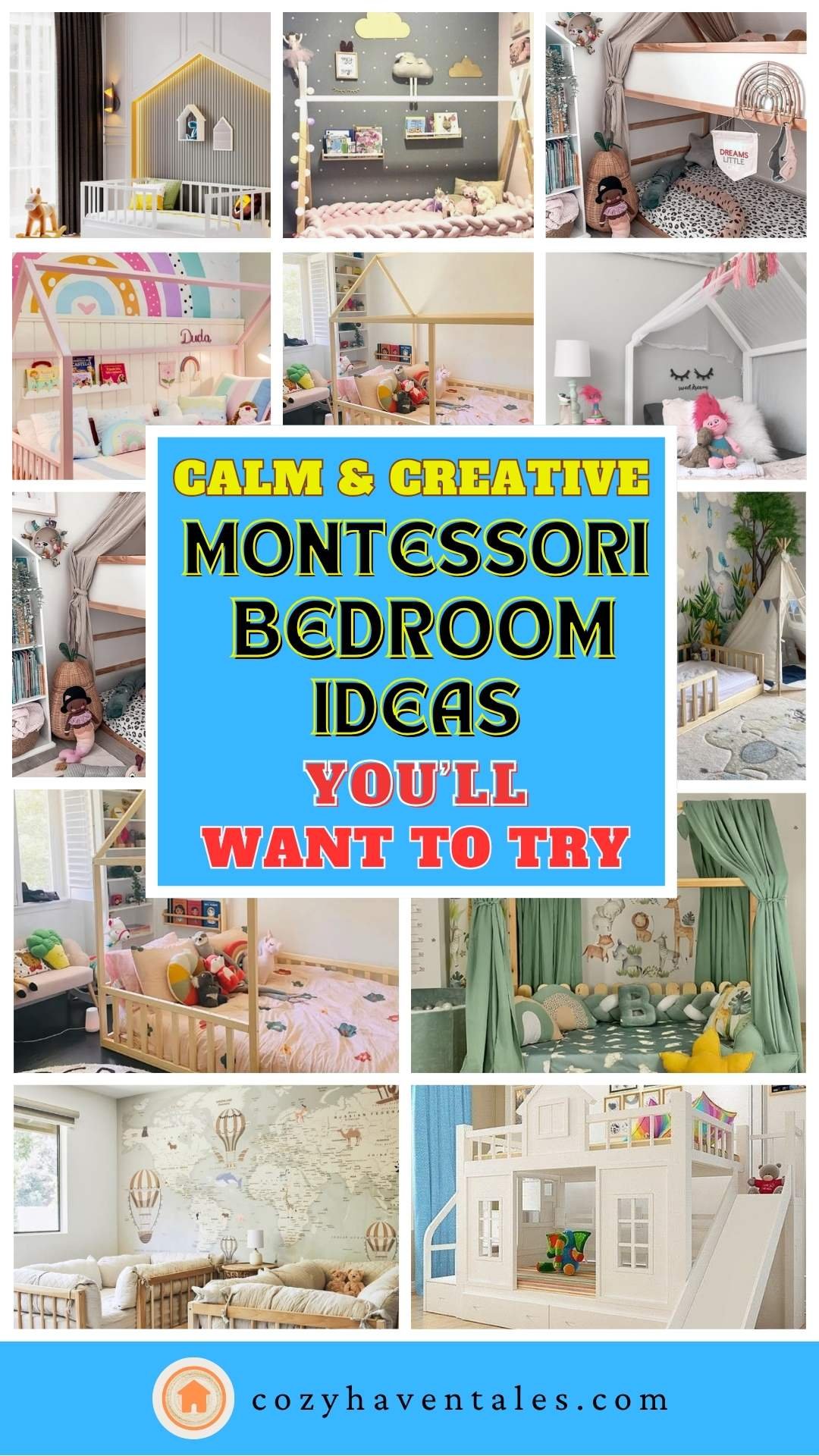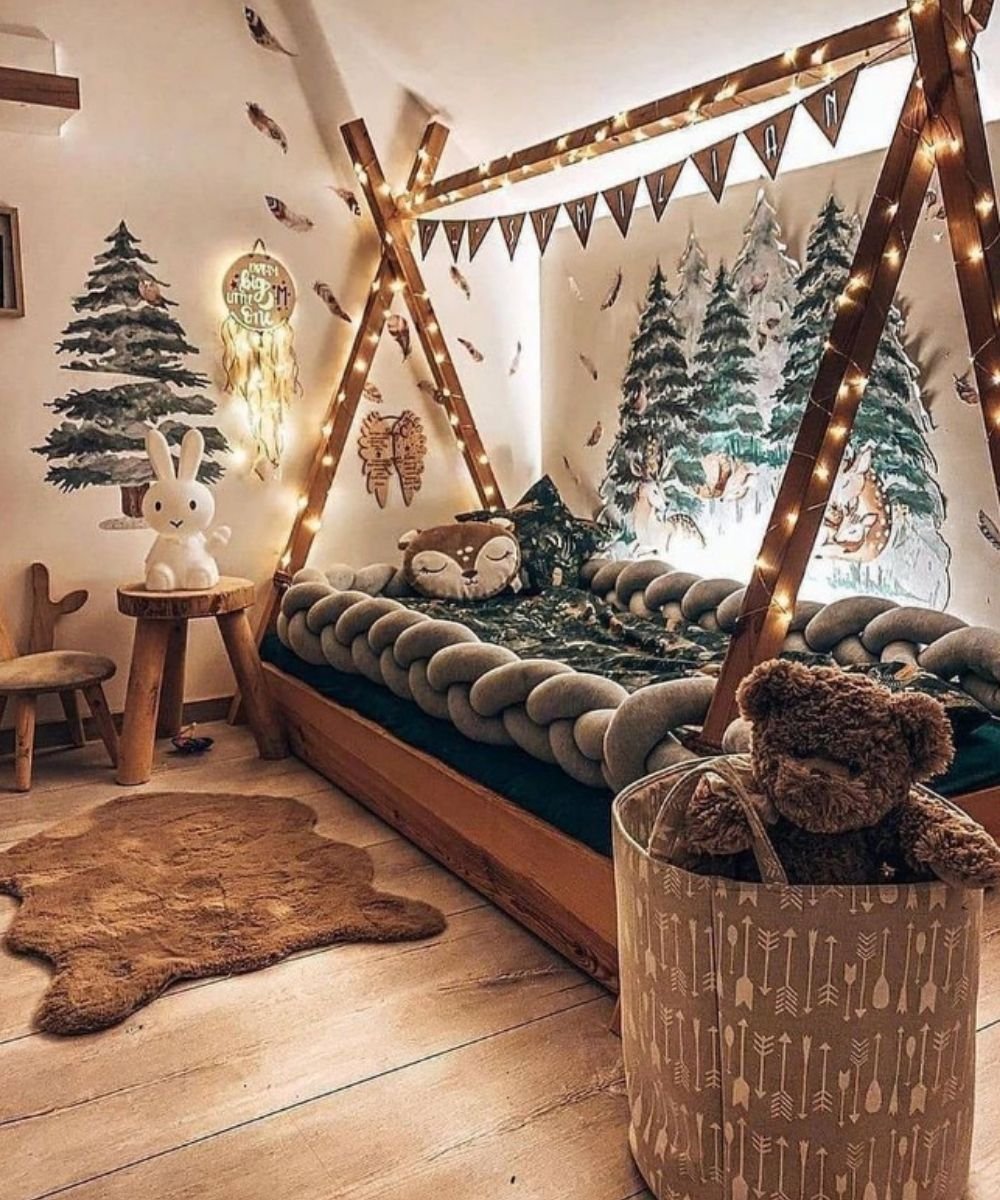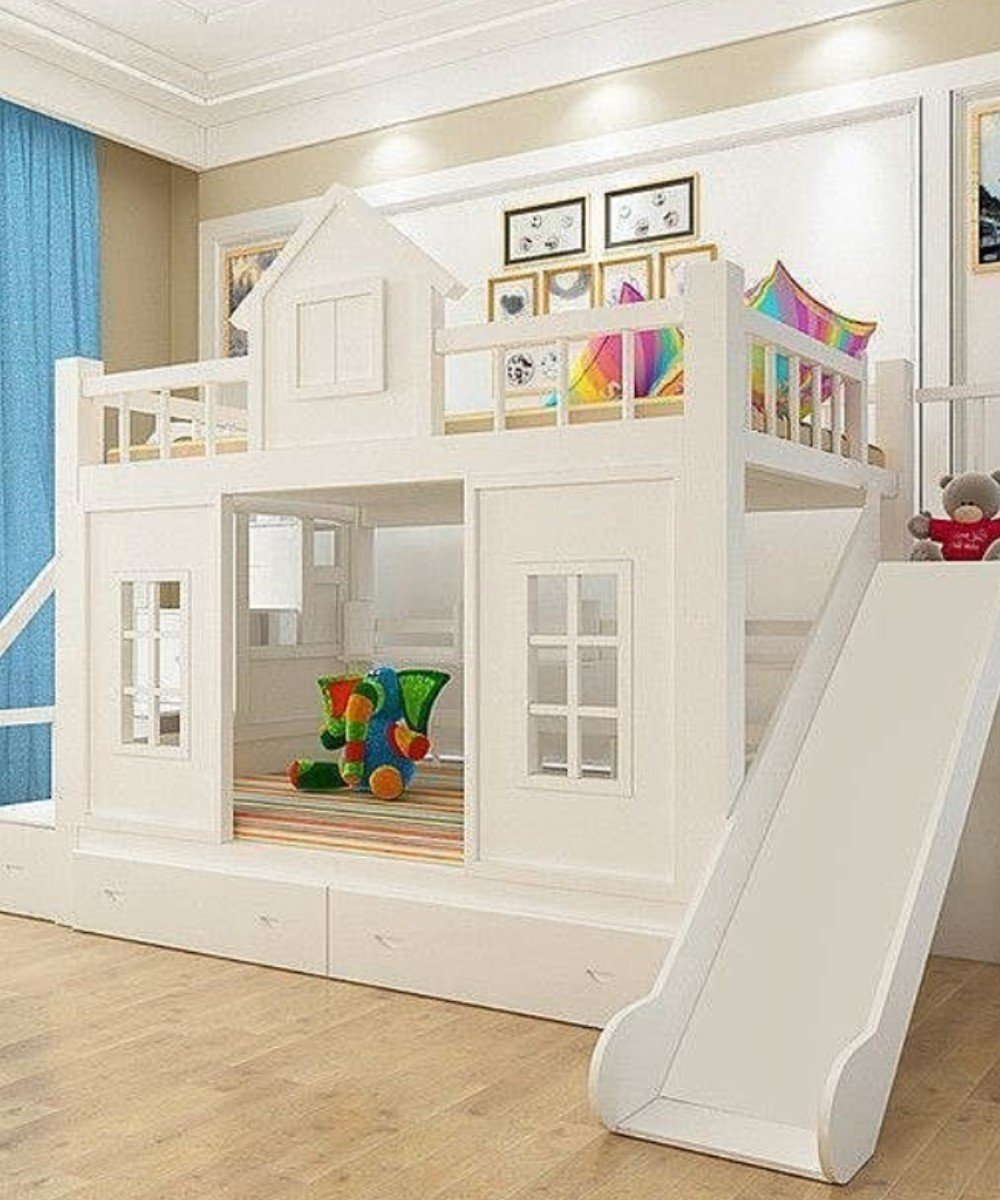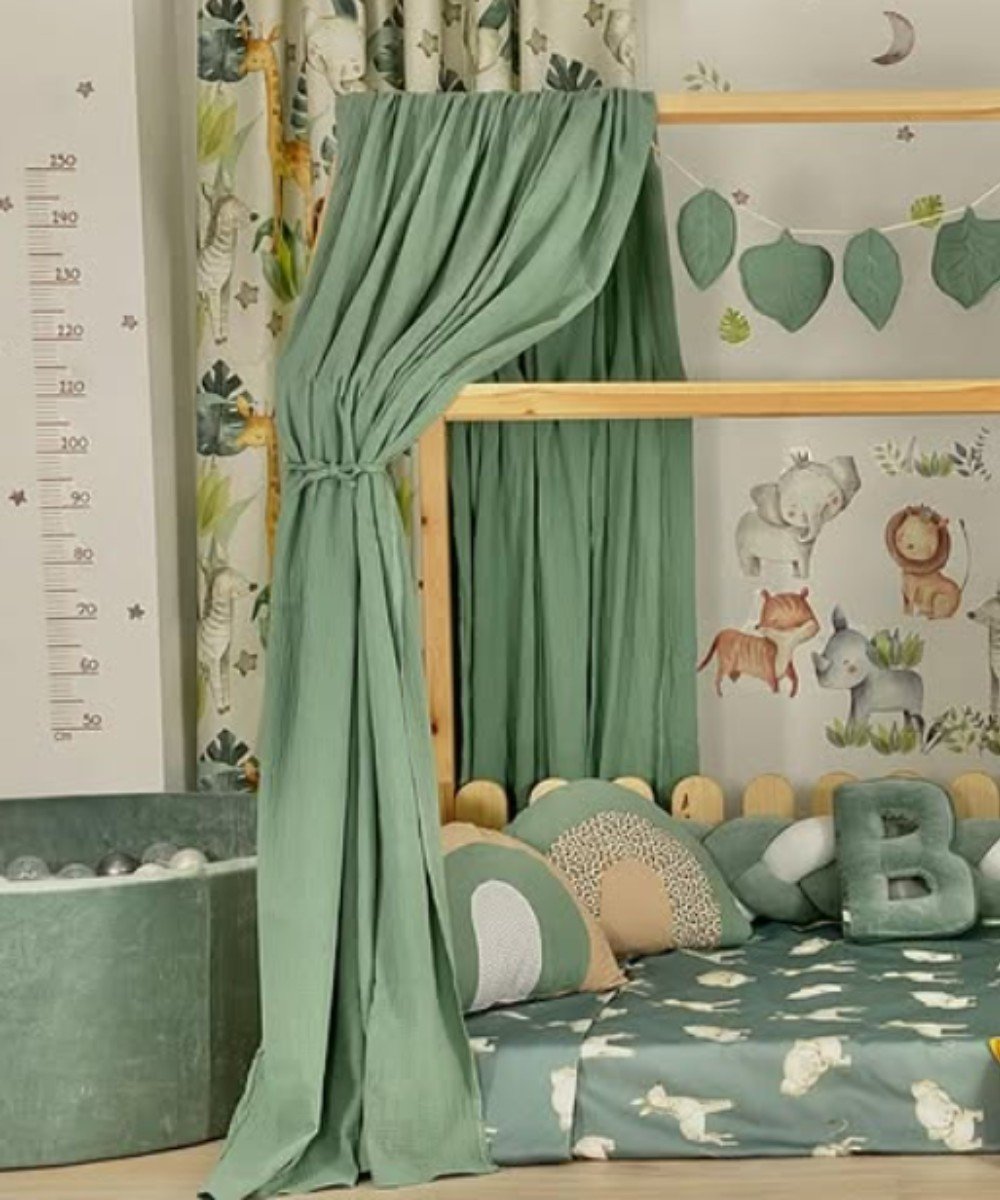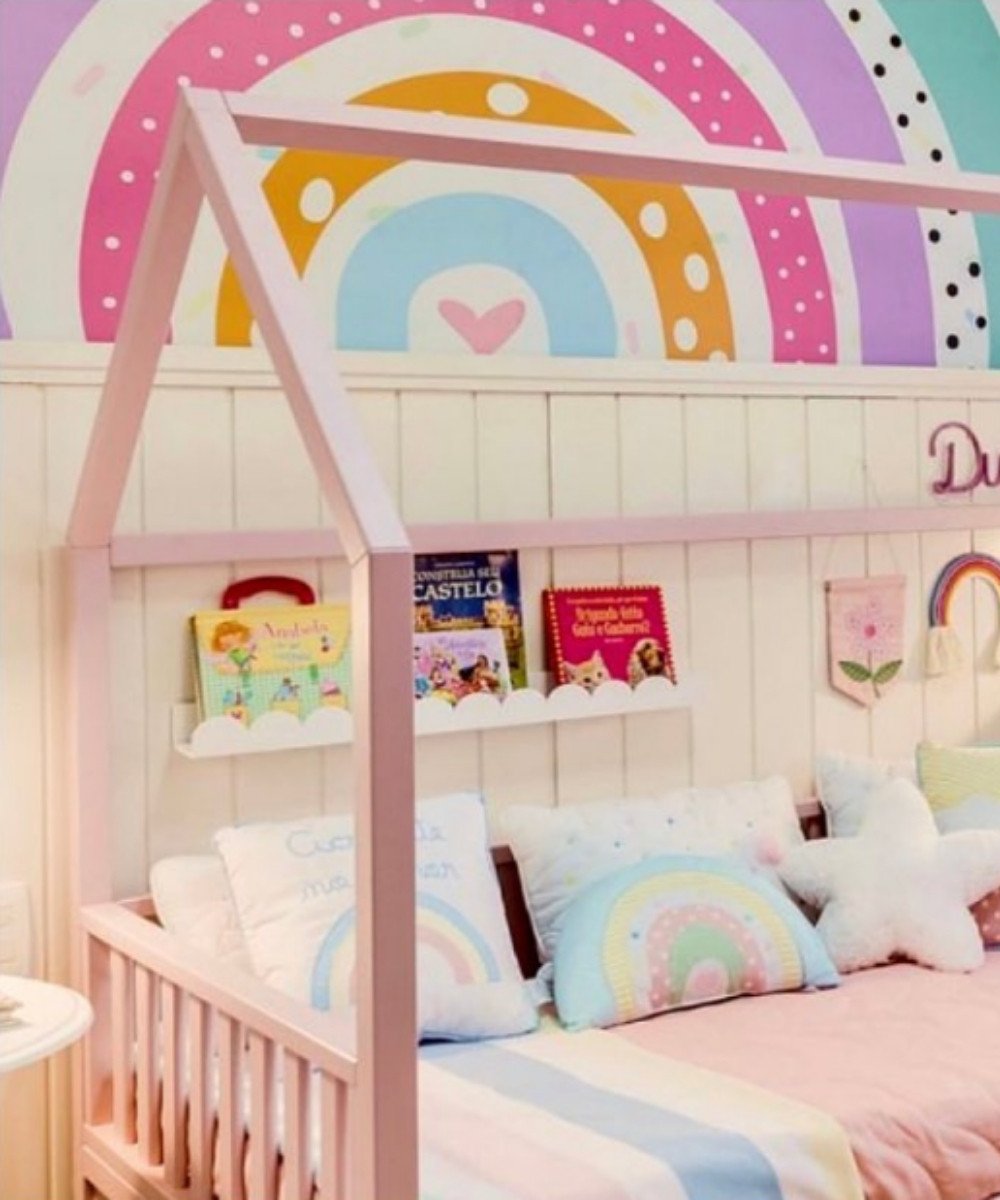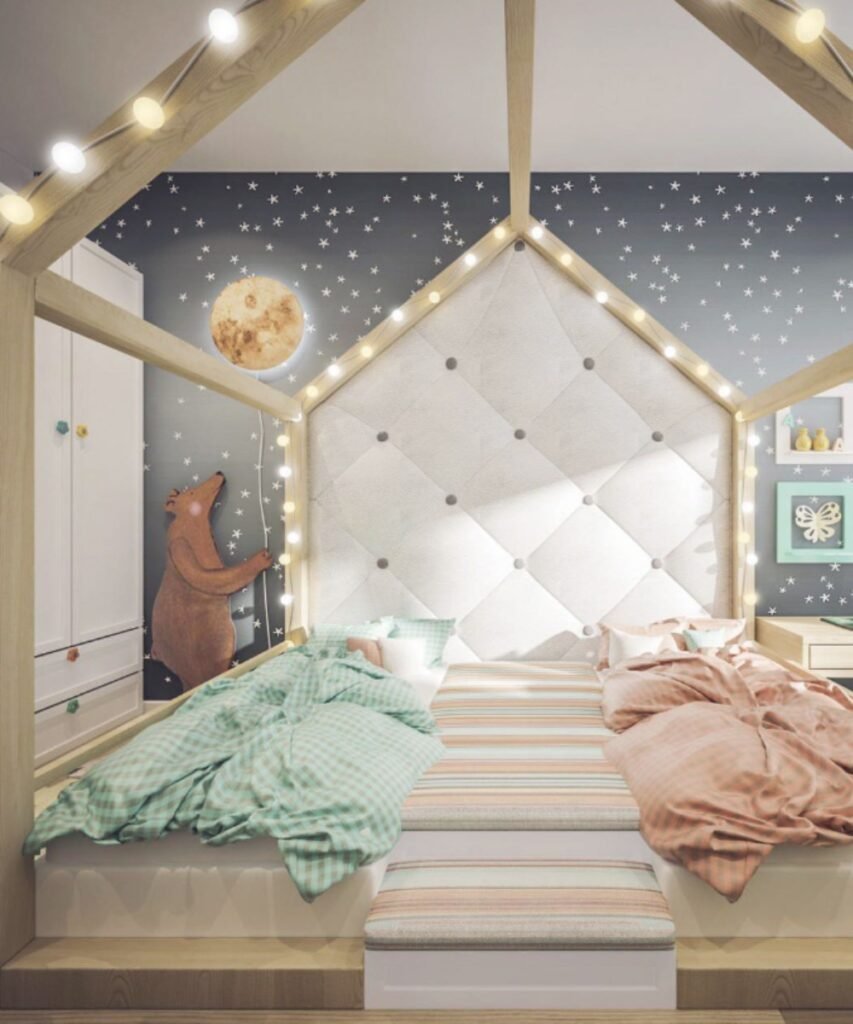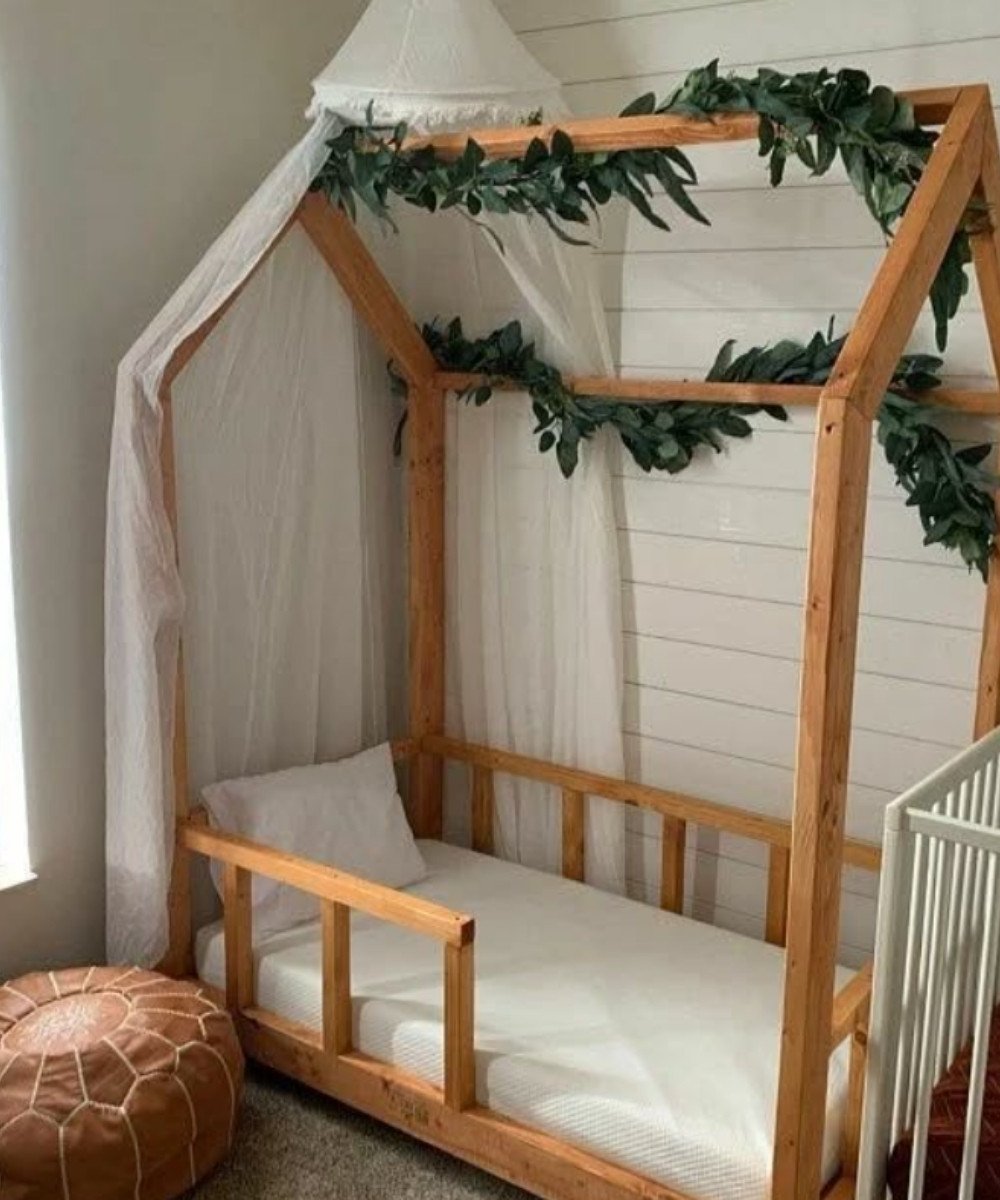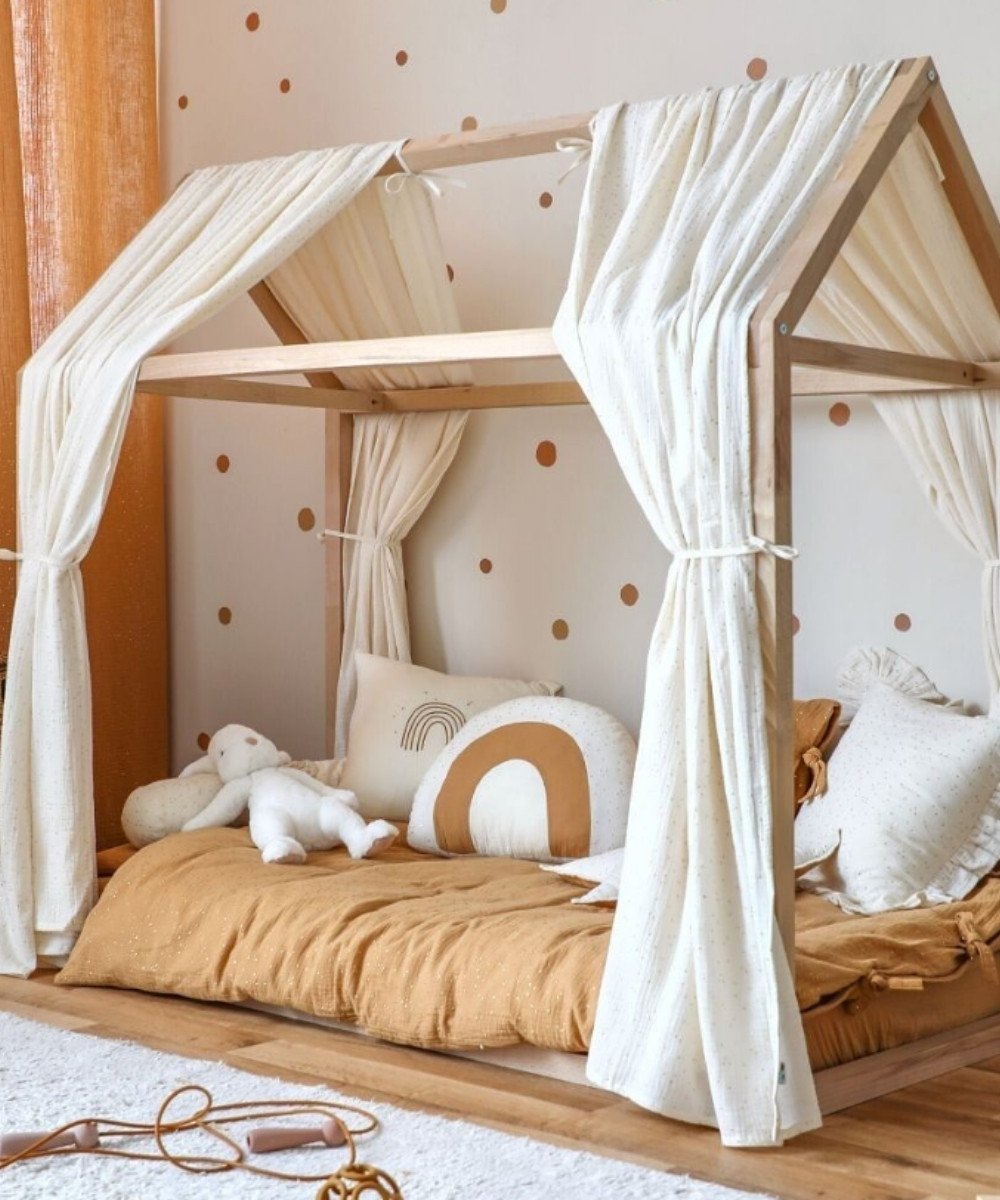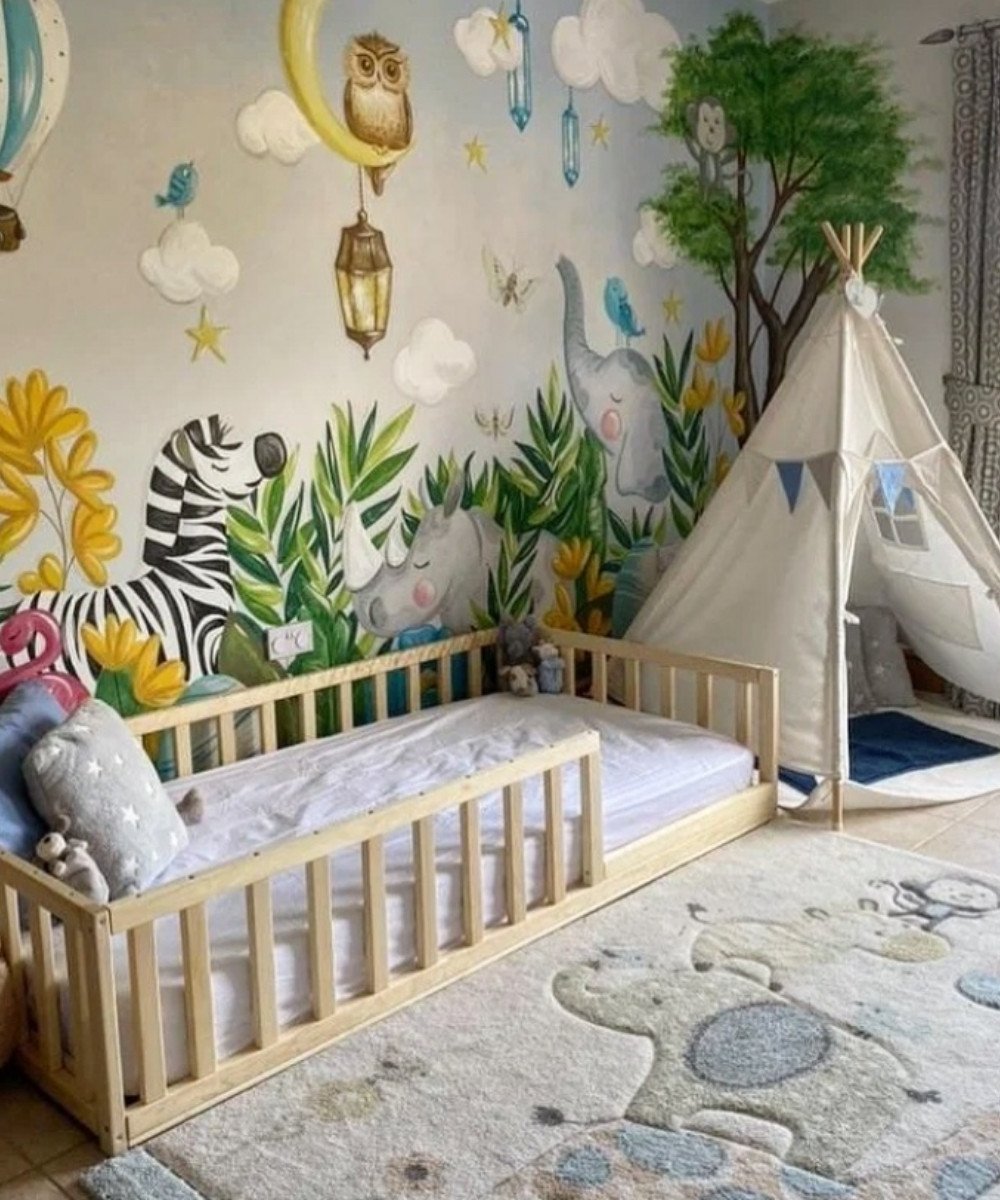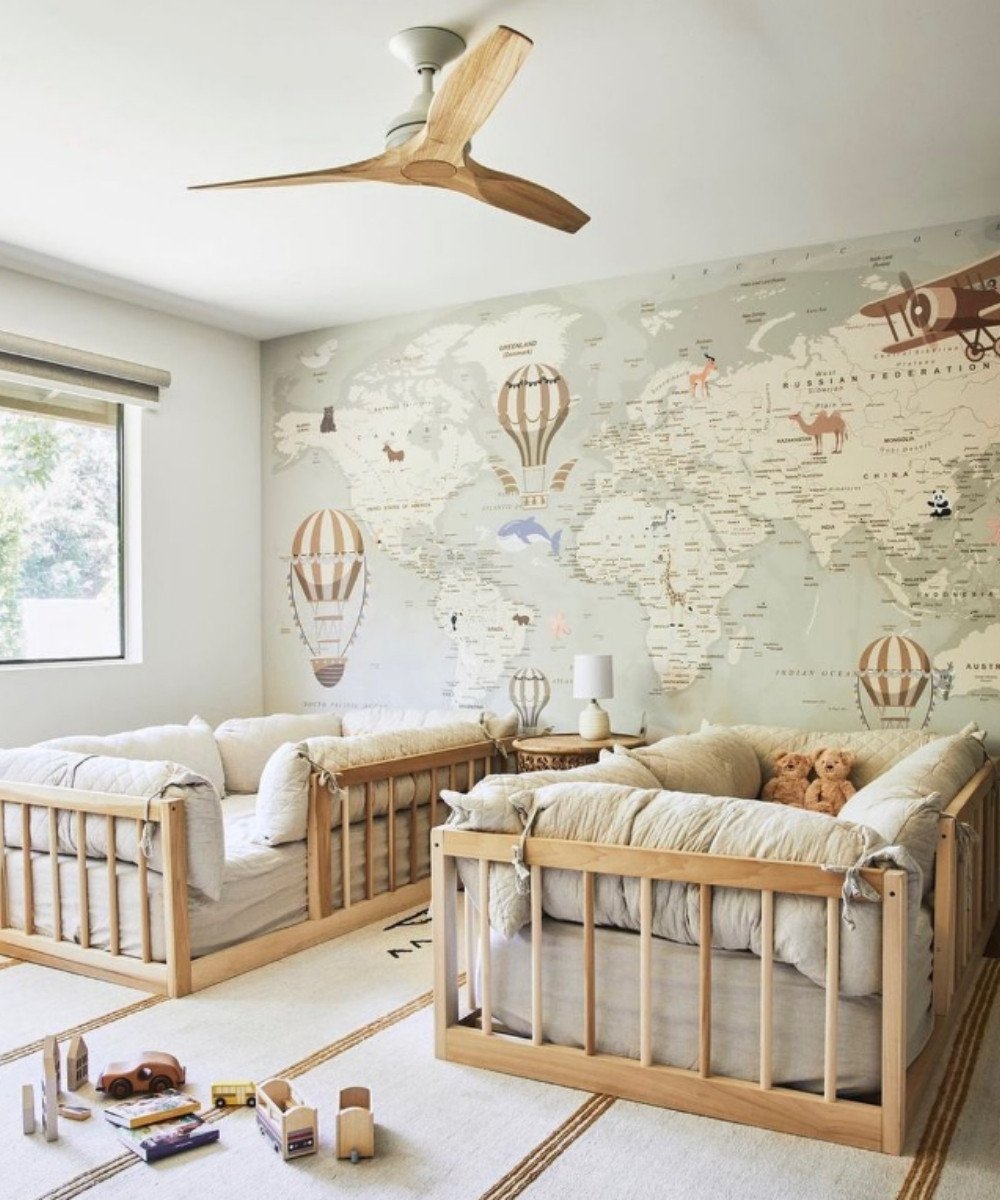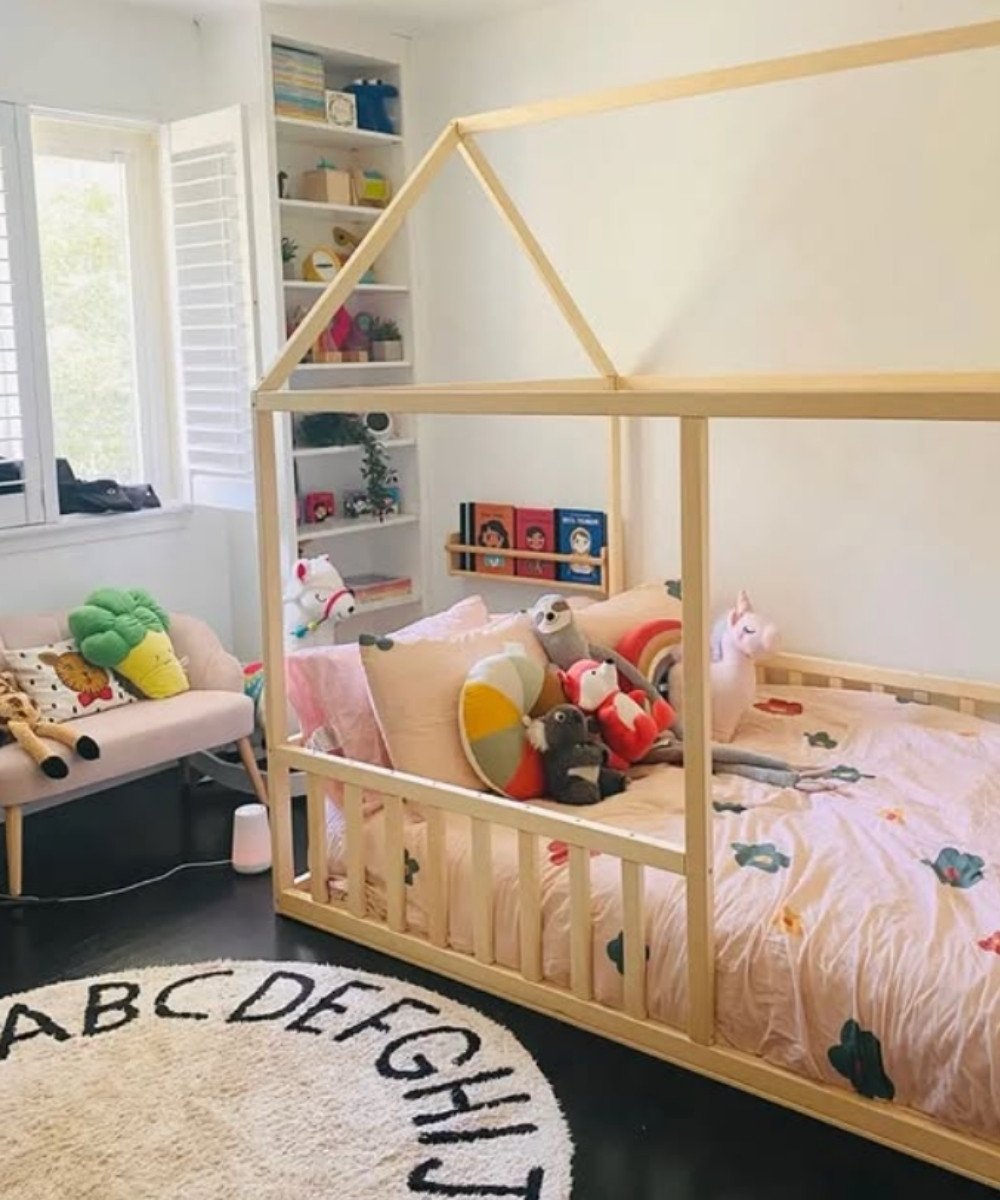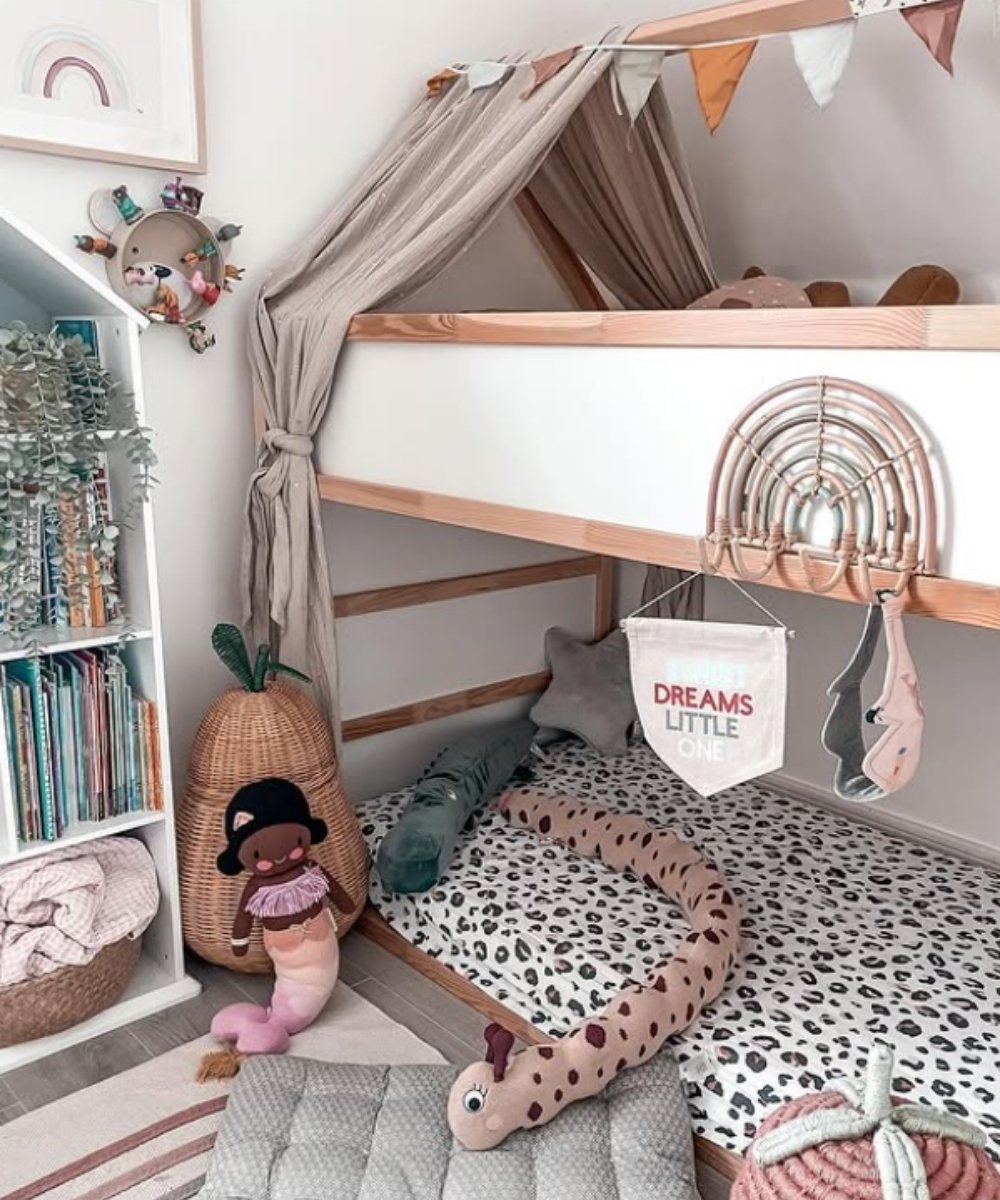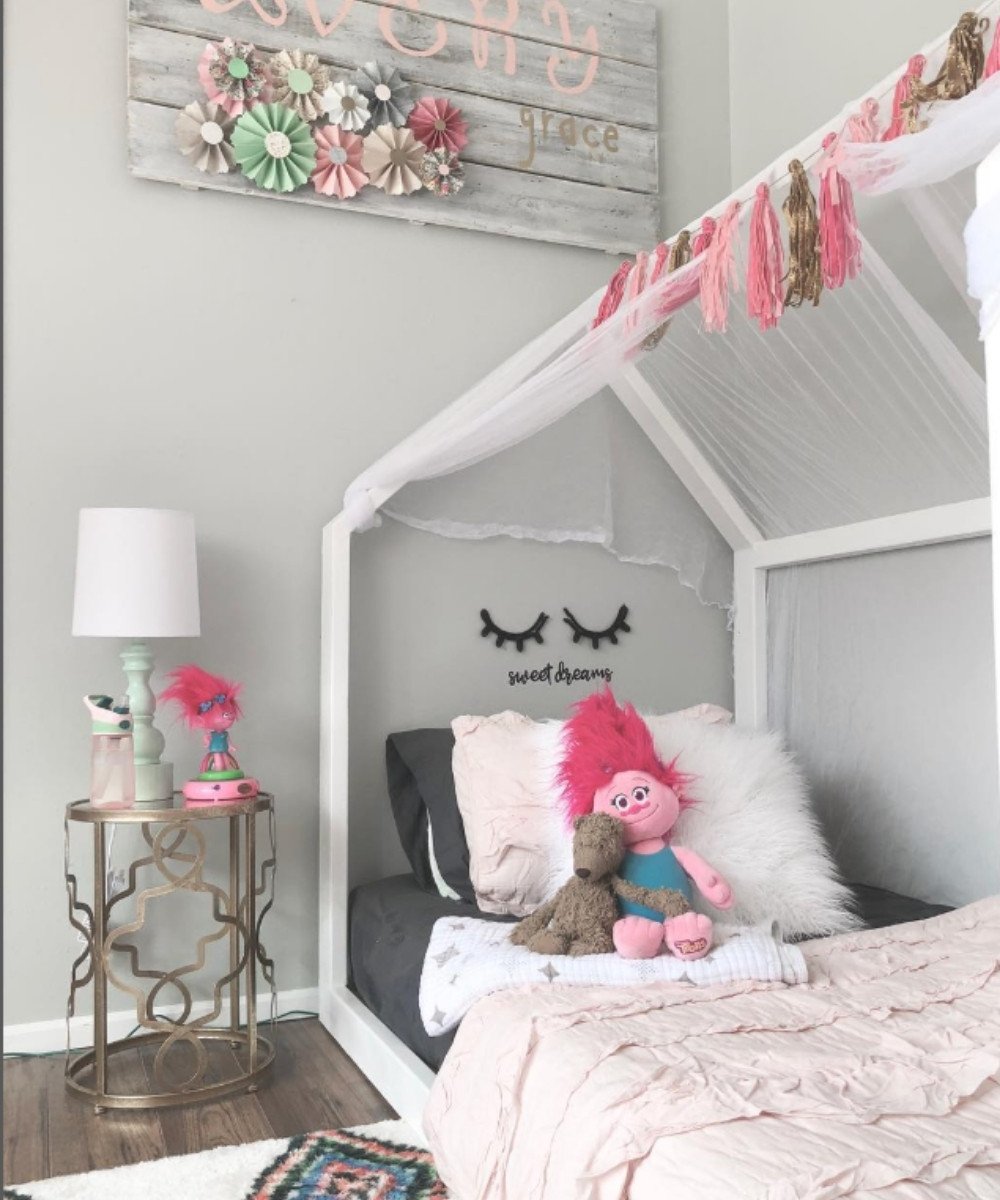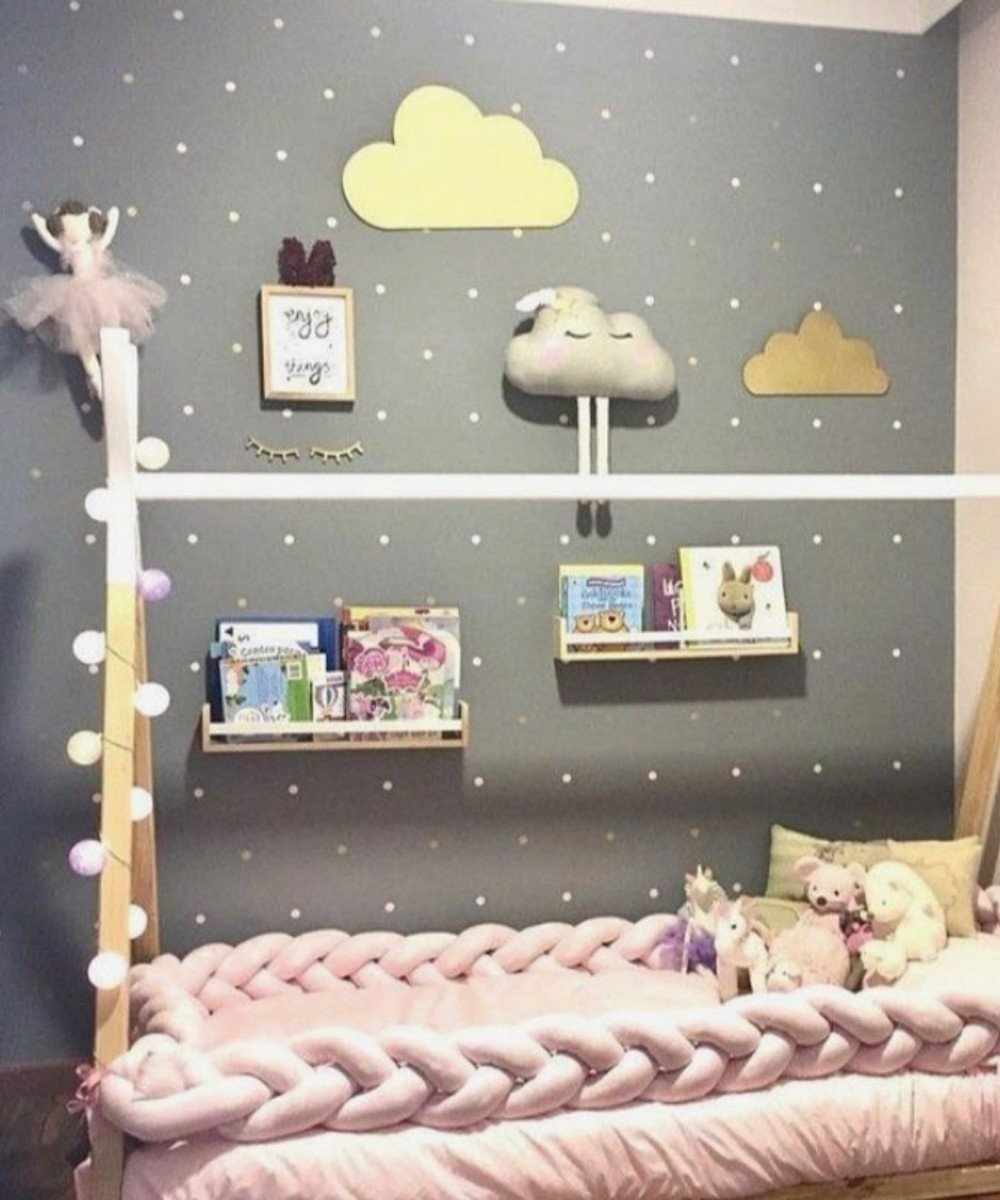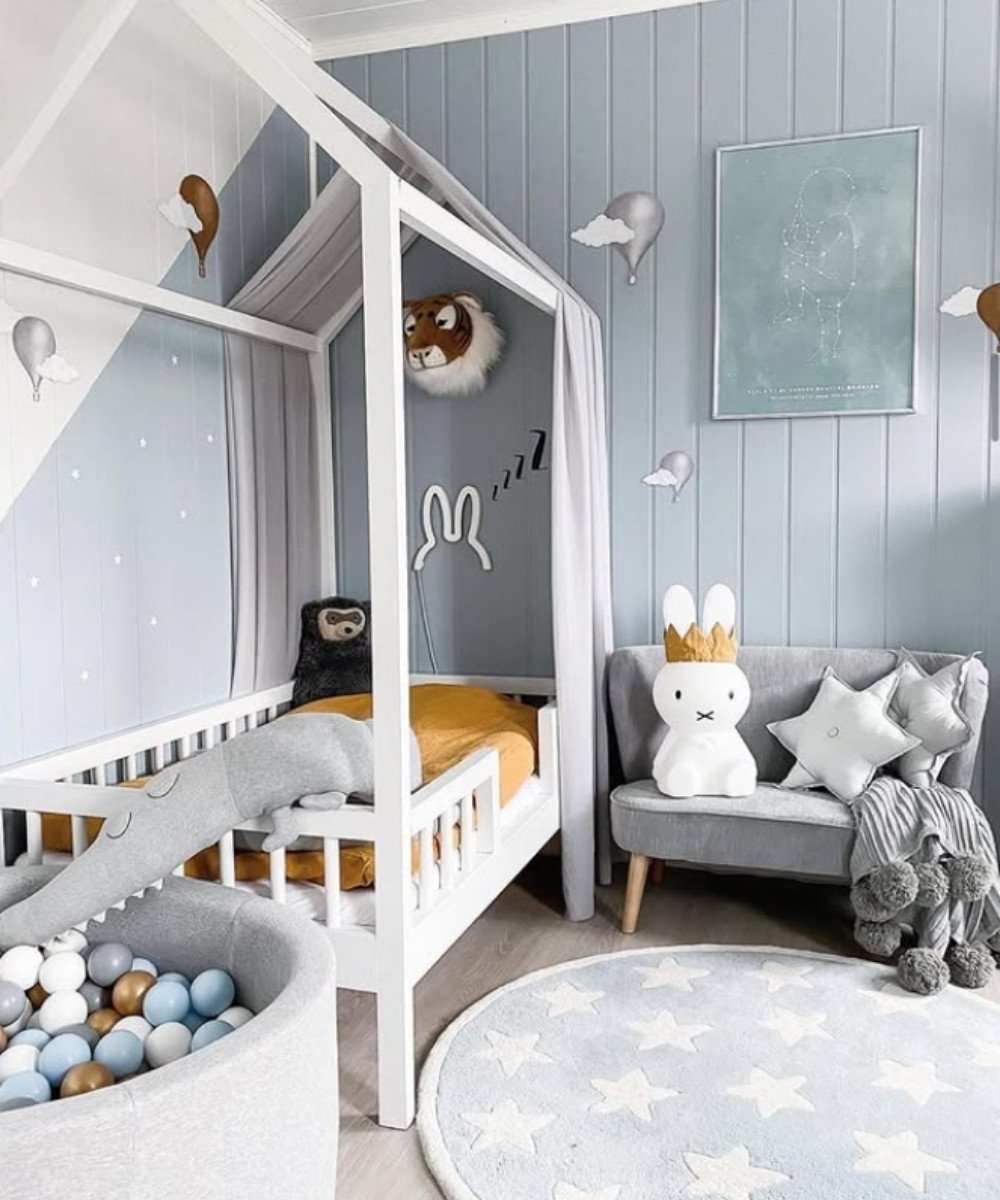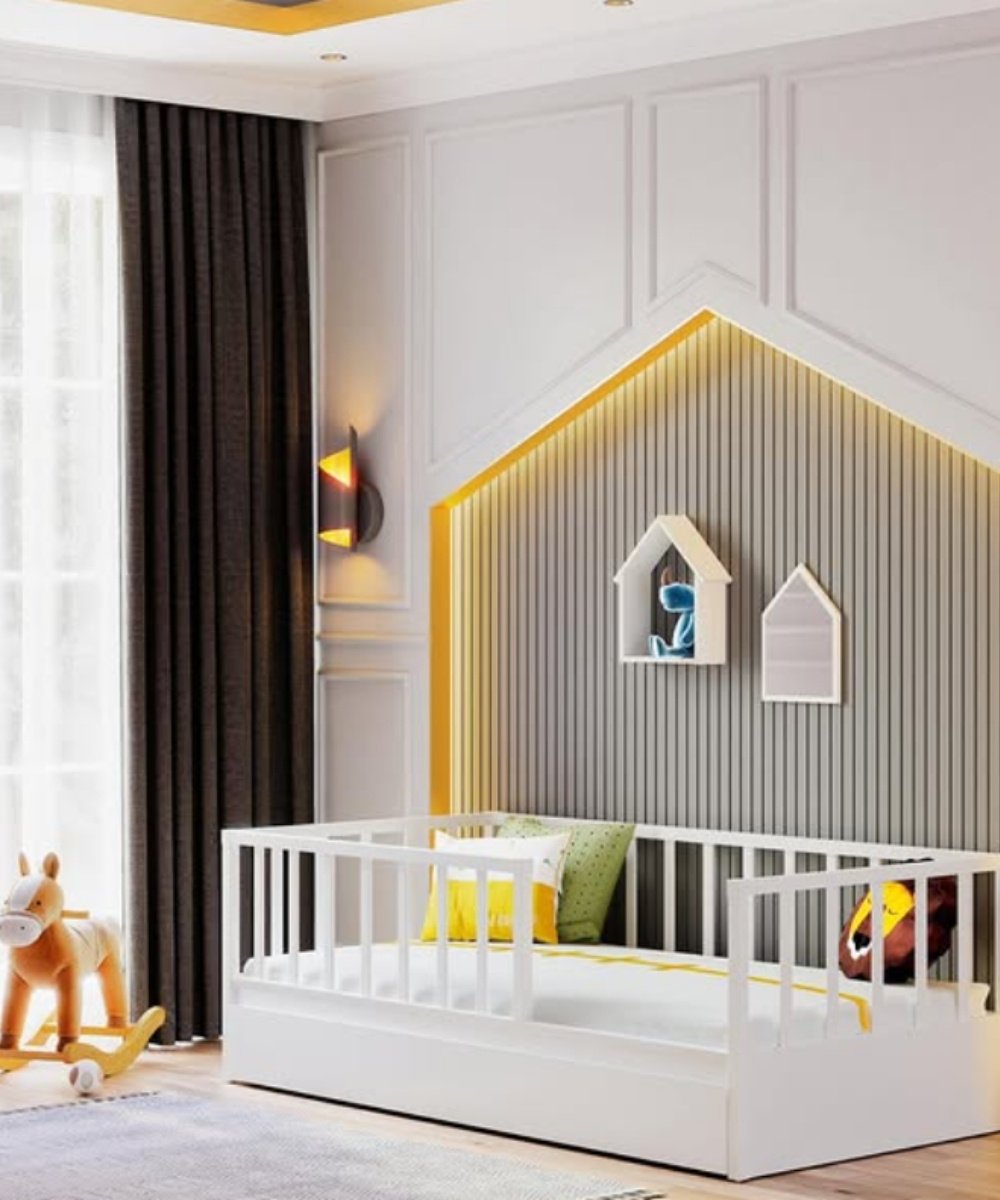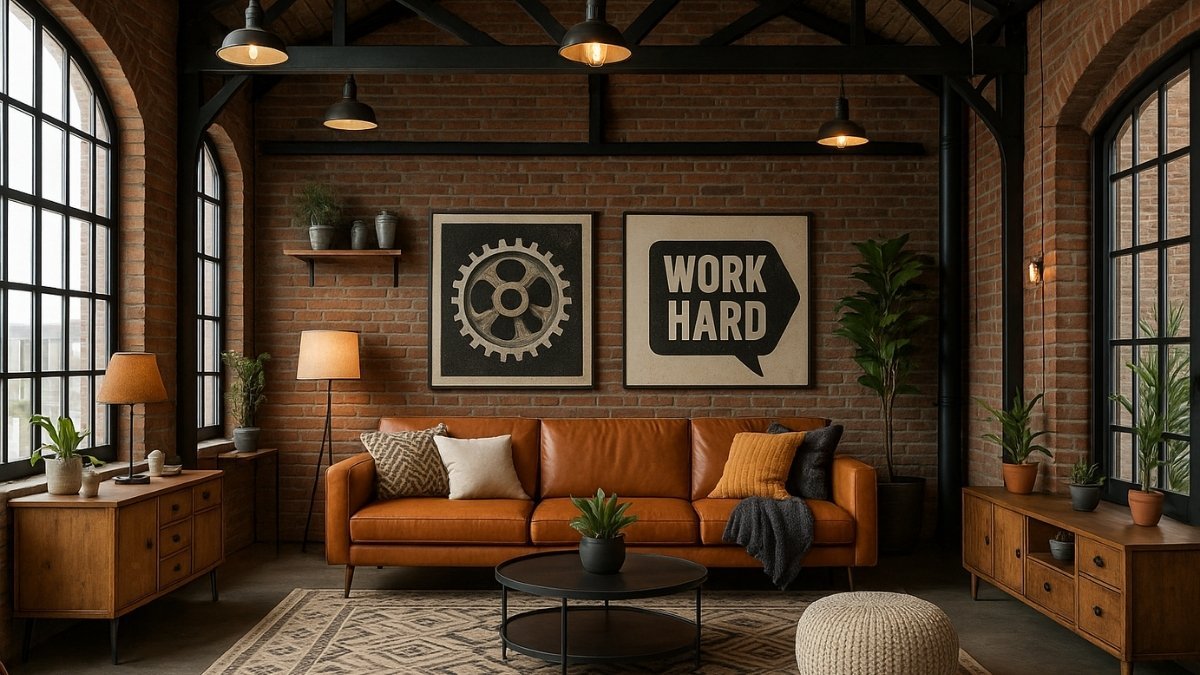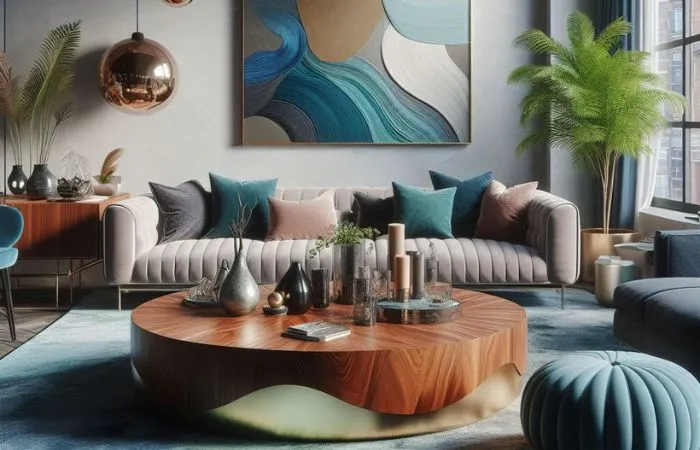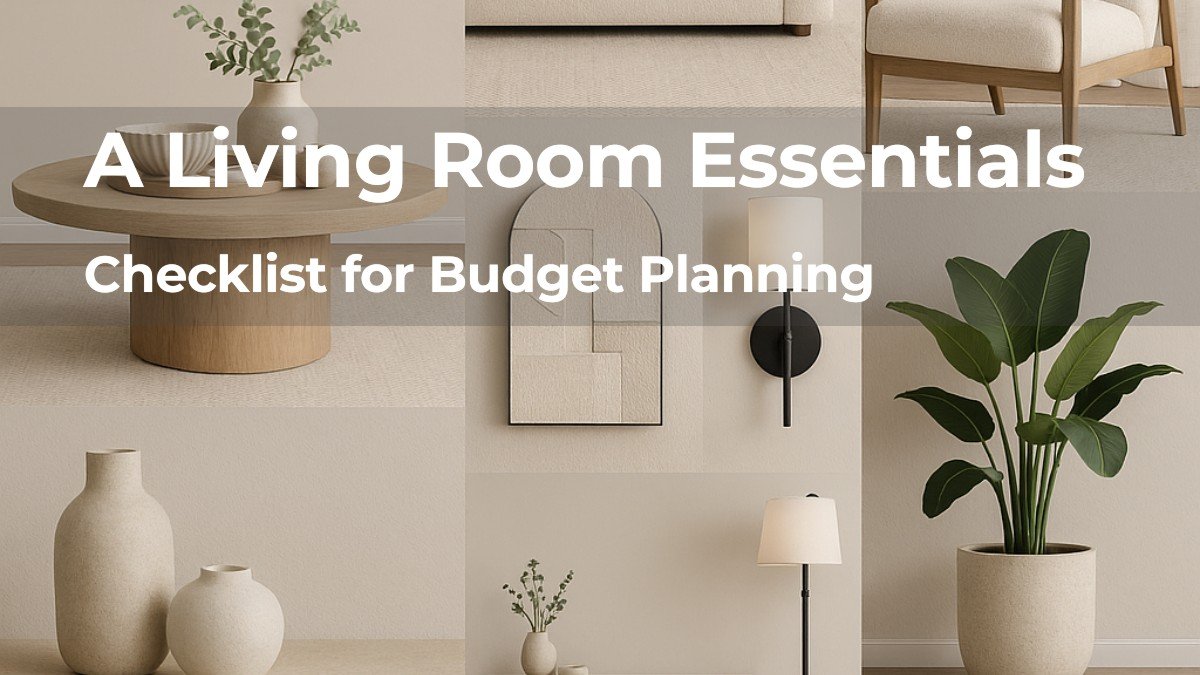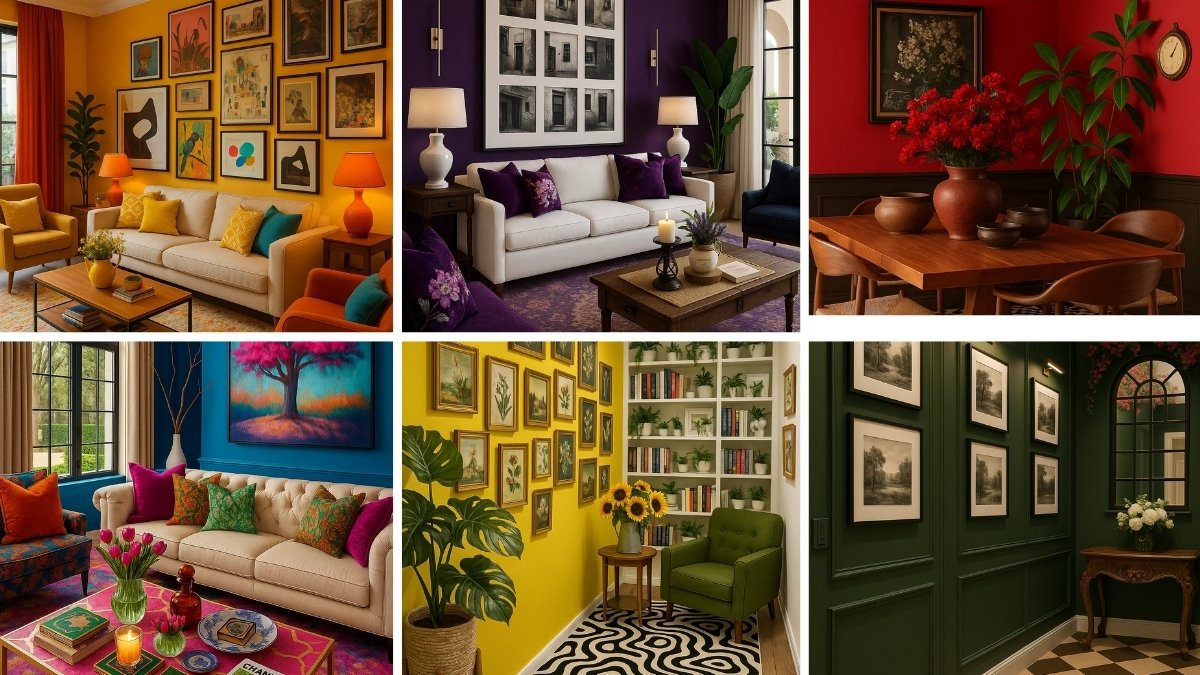This post is part of our series: Spotted & Loved on Instagram
As a designer and mom, I’ve always been drawn to the charm and function of Montessori-style spaces. A Montessori bedroom focuses on freedom, simplicity, and independence—with low-height beds, accessible shelves, and soft, inviting layouts that kids can navigate on their own. It’s not about fancy decor—it’s about creating a space that allows your child to explore, choose, and grow.
Whether you’re starting fresh or simply updating your child’s room, these Montessori bedroom ideas are filled with warmth and imagination.
Related Article:
- Chic & Cozy Moroccan Boho Bedroom Ideas to Inspire Your Space
- Super Cute Teen Girl’s Bedroom Ideas
- Best Striped Sofa Ideas to Add Bold Style to Your Space
1. Create a Woodland Adventure
This woodland-inspired room brings the outdoors in—with tree murals, warm wood tones, and fairy lights setting the scene for imaginative adventures.
CozyHavenTales Tip:
Use wall decals or hand-painted tree motifs to mimic this cozy forest vibe. Add twinkle lights to the canopy and include a nature-inspired rug for layering.
2. Build a Mini Home Bed
A fun blend of sleep and play, this house-shaped bunk bed includes a cozy top bunk, slide, and playroom underneath—ideal for growing Montessori kids.
CozyHavenTales Tip:
Choose a bunk-bed structure with multiple levels of interaction. Keep storage accessible at the base and allow for creative play in the “house” zone.
3. Add Jungle Calm With Green Drapes
This setup feels like a peaceful jungle nook—complete with canopy drapes, animal wall decals, and cozy earth-toned bedding.
CozyHavenTales Tip:
Introduce earthy greens through curtains and bedding. Add a soft braided bumper, leaf garlands, and jungle animal prints to complete the nurturing feel.
4. Paint a Joyful Rainbow Theme
This sweet rainbow-themed room celebrates pastel joy with soft textures, child-sized furniture, and easy-access books—perfect for encouraging reading and rest.
CozyHavenTales Tip:
To recreate this look, paint a rainbow mural or add peel-and-stick decals behind the bed. Opt for low floor beds and add cloud/star-shaped pillows for tactile coziness.
5. Light Up with Stars and Cozy Twins
This shared bedroom glows with warmth—string lights, star decals, and cushioned backboards make it both dreamy and functional.
CozyHavenTales Tip:
Use neutral wooden frames and add fabric wall padding for safety and softness. String star-shaped lights and use star decals to bring a magical night-time effect.
6. Add Nature-Inspired Simplicity
This minimal Montessori bedroom uses natural wood tones, a soft canopy, and faux leaf garlands to bring calm and organic vibes to a child’s space.
CozyHavenTales Tip:
To achieve this serene style, keep the palette neutral and minimal. Drape sheer white fabric and add greenery garlands to give the bed a dreamy forest cottage look.
7. Create a Warm and Cozy Corner
This cozy space is styled with warm ochre bedding, soft cushions, and playful dotted walls—making it both cheerful and restful.
CozyHavenTales Tip:
Use warm-toned bedding like mustard or clay and balance it with creamy drapes. Add simple wall decals like polka dots for a playful, modern Montessori touch.
8. Paint a Jungle Story on the Wall
A colorful safari mural sets the scene here, turning a simple Montessori floor bed into an imaginative haven, with a tent for quiet time or pretend play.
CozyHavenTales Tip:
Paint or use a wallpaper mural filled with animals and greenery. Add a reading tent and animal plushies to fuel creativity while keeping the room Montessori-aligned.
9. Explore With a Map Wall
Perfect for siblings or twins, this travel-themed room uses map wallpaper and matching Montessori beds to build curiosity and connection.
CozyHavenTales Tip:
Add a large-scale world map to inspire learning and exploration. Use matching wooden beds with soft, natural bedding for a grounded, symmetrical layout.
10. Color With Playful Soft Toys
Soft colors, floor-level access, and a crowd of plush toys create a welcoming and safe sleep space in this vibrant Montessori bedroom.
CozyHavenTales Tip:
Display your child’s favorite soft toys around a pastel bedding palette. Keep the structure open and low, encouraging comfort, independence, and play.
11. Design a Cozy Bunk Corner for Play & Sleep
This room is packed with Montessori charm—lower bunk access, dreamy textiles, story books within reach, and soft textures to explore.
CozyHavenTales Tip:
Use neutral bedding and soft canopies to give the space a restful vibe. Layer in reading baskets, soft toys, and floor cushions to create a multifunctional Montessori zone.
12. Style with Personal Touch and Tassels
Personalized wall art and colorful accents bring character into this sweet and soft setup, designed for solo rest and imaginative play.
CozyHavenTales Tip:
Add a wooden name sign and a mix of textures like tassels and lace to make the space feel uniquely theirs. Soft toys and pink tones create a welcoming space for winding down.
13. Build a Cloudy Dreamland
Whimsical clouds and string lights add magic to this low-floor bed setup—keeping everything within reach and under a dreamy night sky feel.
CozyHavenTales Tip:
Incorporate soft wall decals like clouds or stars. Use a braided bumper around the bed for both comfort and aesthetics, and wrap lights along the frame to keep it enchanting.
14. Color with Cool Blues and Soft Characters
This blue-toned room balances structure and softness—featuring a mix of animal plushies, modern furniture, and a cozy ball pit that fits Montessori play needs.
CozyHavenTales Tip:
Use a limited color palette like blue and white to calm the space. Choose functional pieces like a ball pit, padded star pillows, and story-themed wall accents to spark play.
15. Paint with Bold Geometry and Light
With a pop of mustard and a geometric house-shaped wall, this room keeps Montessori simplicity while adding architectural interest and playfulness.
CozyHavenTales Tip:
Incorporate bold wall shapes using molding or paint to give your Montessori setup structure. Use hidden lighting for soft, ambient glow and minimal toy clutter.
General Tips While Designing a Montessori Bedroom
Designing a Montessori bedroom isn’t about creating a magazine-perfect room—it’s about crafting a space where your child feels safe, seen, and independent. Here are some thoughtful, practical tips I always keep in mind:
- Keep Everything at Child Height
From the bed and shelves to hooks and mirrors—everything should be within your child’s reach to promote independence and confidence. - Use a Floor Bed Instead of a Crib
A low bed encourages freedom of movement and allows your child to decide when to rest or explore—true to Montessori philosophy. - Simplify the Space
Less is more. A clutter-free room helps children focus better and move around freely without overwhelm. - Incorporate Natural Materials
Wooden furniture, cotton fabrics, and earthy tones bring warmth and calm to the environment while connecting your child to nature. - Create Defined Zones
Think of separate areas for sleep, reading, and play—even in small rooms. A soft rug, a small bookshelf, or a cozy tent can subtly define spaces. - Encourage Exploration Through Decor
Use soft toys, nature prints, world maps, or tactile elements like leaf garlands, clouds, or stars. Choose what resonates with your child’s current interests. - Make It Personal and Playful
Include your child’s name, favorite books, and beloved toys. Let them participate in small decisions to foster a sense of ownership.
FAQ: Montessori Bedroom Design
Q1: At what age can I start a Montessori bedroom for my child?
You can begin as early as infancy. Floor beds and low shelves are safe and effective for toddlers as young as 6 months—with supervision.
Q2: Does a Montessori bedroom require special furniture?
Not at all. The focus is on simplicity and accessibility. Even DIY or second-hand furniture can work beautifully if it supports the child’s independence.
Q3: How do I manage safety in a floor bed setup?
Keep the room baby-proofed—cover sockets, secure furniture to walls, and use a soft rug around the bed. A floor bed is safe when the whole room is safe.
Q4: Can I still make it fun and colorful?
Absolutely! Montessori doesn’t mean boring. Just be intentional—use colors, textures, and playful decor that also serve a purpose or tell a story.
Q5: Is a Montessori bedroom only for toddlers?
While it’s especially useful for toddlers, older children benefit too. As they grow, the setup evolves to support their learning, self-care, and creativity.
🌟 Conclusion: Designing With Your Child in Mind
Montessori bedrooms are more than just trendy—they’re deeply thoughtful, rooted in respect for a child’s independence and imagination. Whether you love soft neutrals or vibrant storybook themes, the beauty lies in how the space empowers your little one.
As you explore these images and tips, remember: it’s not about getting it all perfect—it’s about making it meaningful. Your child’s room should grow with them, reflect their curiosity, and most of all—feel like a place they truly belong.
✨ If one of these ideas inspired you, save it or try adding just one change to your child’s room today!
